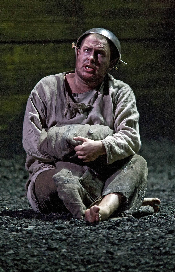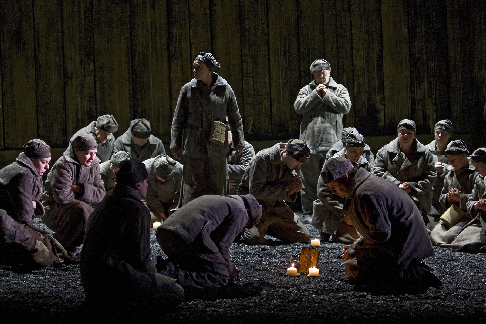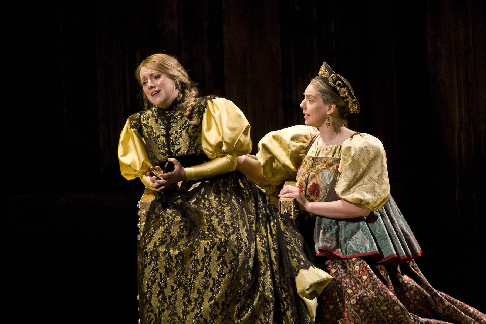25 Nov 2008
Boris Godunov at ENO
There are two things which, in recent history, English National Opera has consistently done extremely well.

There are two things which, in recent history, English National Opera has consistently done extremely well.
One is Handel; the other, the large-scale Russian repertoire. It has been almost six years since the company last tackled the latter, but that revival of Khovanshchina left such an indelible impression that a new foray into this sector of the repertoire could not have been more eagerly awaited.
It is, to my mind, a shame that ENO chose to give Boris Godunov in its original seven-scene version of 1869. Running slightly over two hours, without an interval, it certainly has its merits in terms of dramatic tautness and momentum, but it is undeniably a weaker and poorer piece than the later versions. Most crucially, it lacks almost all the political and religious context of the later, longer version. The missing Polish act holds vital pieces of the jigsaw when it comes to Russia's history with Lithuania – it actually supplies the bedrock for the whole story. Without those scenes, all the focus is thrown onto Boris's private demons and the hardships of the Russian people. It is almost an entirely different opera.
 Simpleton (Robert Murray)
Simpleton (Robert Murray)
Tim Albery's new production follows through the idea of stripping the
piece bare. Tobias Hoheisel's set is simple and unusually austere; the entire
opera seems to take place in a giant wooden crate, perhaps a barn. Various
different rooms are created by platforms which slide in and out or come out
hinges. It's a drab brownish-grey, the colour of the peasants' costumes. When
colour is used, it is generally for effect; against this muted background,
the rich patterns of Boris's coronation robe are as garish as the clanging
bells up in the Balcony. Grigory's red hair instantly marks him out as a
figure of interest. The Innkeeper (Yvonne Howard) is vividly attired too, and
her mobile bar is a colourful affair – a welcome break for travellers
from the surrounding dreariness. Together with costume designer Brigitte
Reiffenstuel, Albery has done his best to make the action timeless by
combining costume designs from different periods. The peasants' attire is
generically 20th-century, while Boris's coronation seems to take place
centuries earlier; other costumes fall somewhere in between.
Peter Rose played Boris as a man whose occupation of the throne is as uneasy as he feared it would be. There was a warmth to his portrayal which made Boris likeable; the mad scene was never really gripping or hair-raising, but was full of pathos. Vocally, he held his own, with a sharper focus than I have heard in the past, though his expressive range is limited.
 Scene from Boris Godunov
Scene from Boris Godunov
The staging makes much of the Simpleton; curled up in one corner of the stage during the final scene, he witnesses Boris's breakdown and eventually leads the dying Tsar off into the beyond. Robert Murray's clear, lovely tenor was ideal, imbued with innocence and pathos.
The American tenor, Gregory Turay, was a handsome and secure-voiced Grigory, while John Graham-Hall was a wraith-like Shuisky, the pointed precision of his diction making him all the more sinister. Brindley Sherratt's Pimen was outstanding.
Although this version of the piece barely gives either of Boris's children an opportunity to make their mark, Sophie Bevan was an attractive and lyrical Xenia, and Anna Grevelius a confident Fyodor. (Xenia's second costume – the most striking of the whole production wardrobe – was worn for a ten-second dash across the stage, and again for the curtain call. What a waste!) Jonathan Veira was a characterful Varlaam.
 Xenia (Sophie Bevan) and Nurse (Deborah Davison)
Xenia (Sophie Bevan) and Nurse (Deborah Davison)
The opening scene did not show the (greatly augmented) chorus in their best light, with the ladies especially sounding shrill and vibrato-laden – but they rose to the challenge as the evening went on. The orchestra was magnificent under the baton of ENO's Music Director Edward Gardner, with muscular sound, sensitive phrasing, and particularly fine playing from the woodwind section. Now can we have the rest of the opera, please?
Ruth Elleson © 2008